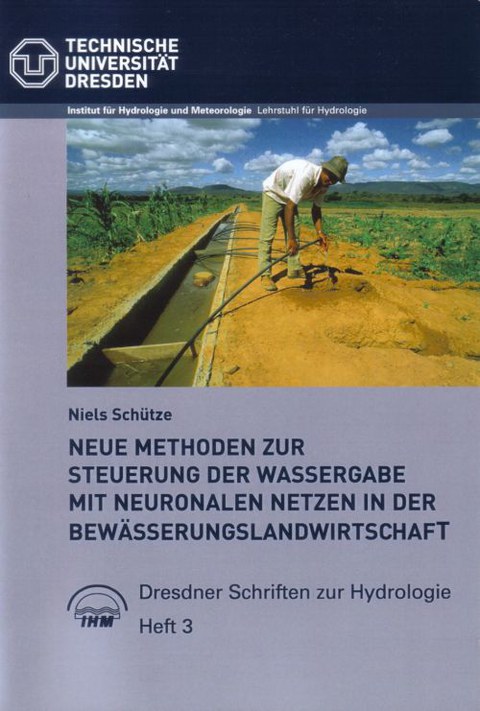Booklet 3
Neue Methoden zur Steuerung der Wassergabe mit neuronalen Netzen in der Bewässerungslandschaft
by Niels Schütze (2005)
Abstract: Agriculture is still the greatest water user of all consumers while having the lowest water use efficiency. Especially, irrigated agriculture is particularly guilty of inefficient water use, the pollution of ground and surface water and land degradation. Thus, good water management practices in irrigation aim to improve water use efficiency, along with preserving the soil and water resources, without sacrificing crop productivity. Computer-based modeling technology plays a critical role in identifying and comparing or assessing the sustainability of water resources management in irrigation. Up until now, physically based process modeling was the best tool for irrigation management. Unfortunately, the big drawback of these coupled numerical irrigation models lies in their extremely high computational effort. Furthermore, their operation may encounter numerical instabilities and requires a comprehensive experience in numerical modeling. Furthermore, complex objective functions in irrigation management lead straight to optimization problems which are very difficult to solve. This work introduces a new methodology, which performs the evaluation of the application parameters in irrigation in two fully separate phases, namely a preparatory phase and an application phase. Instead of using process models to assist with the problematic direct optimization of an objective function during the preparatory phase, the process models after being fed with local data generate a comprehensive range of irrigation scenarios. With the help of the thus obtained parameters and the input/output data sets, the neural network learns the behaviour patterns of the irrigation system under consideration. During the application phase, the artificial neural network states the optimal irrigation parameters for a field in an easy and straightforward way. A problem-adapted artificial neural network, the self-organizing map with input/output option (SOM-MIO), was developed which demonstrated an impressive prediction reliability in determining the irrigation parameters compared to other network architectures. New extensions for the SOM-MIO like a piecewise linear interpolation scheme brought improvements as regards convergence, numerical stability and training time. The reliability and convincing computational efficiency of the new strategy were attested by the results of sophisticated applications in irrigation practice together with 1D-, 2D- and 3D process models. These examples demonstrated the excellent performance of the SOM-MIO as regards the prediction accuracy for the control of all common irrigation methods for deficit irrigation as well as for full irrigation. Furthermore, using the SOM-MIO within a Monte Carlo analysis proved its fundamental superiority in computational efficiency when compared to numerical simulation models.

